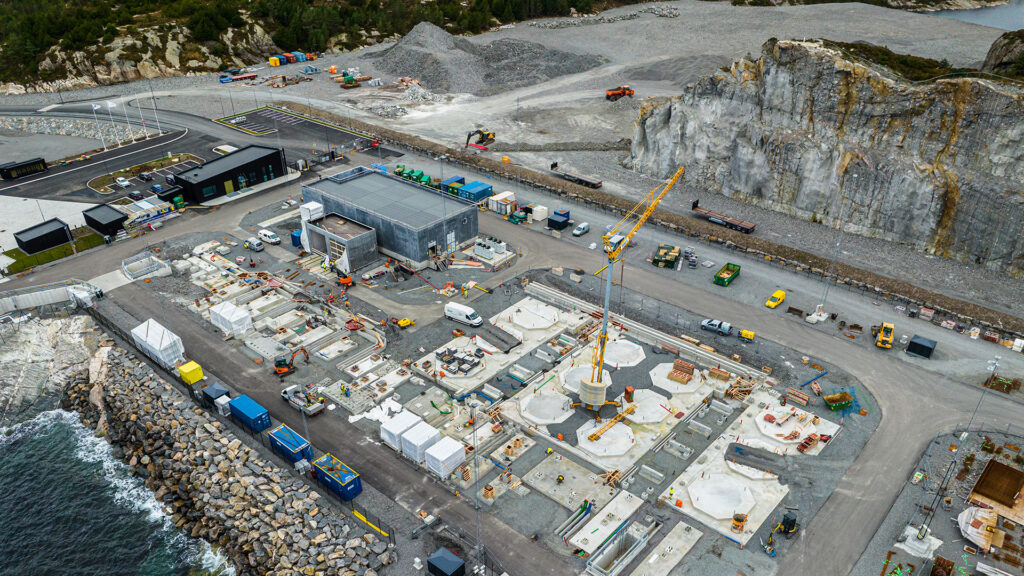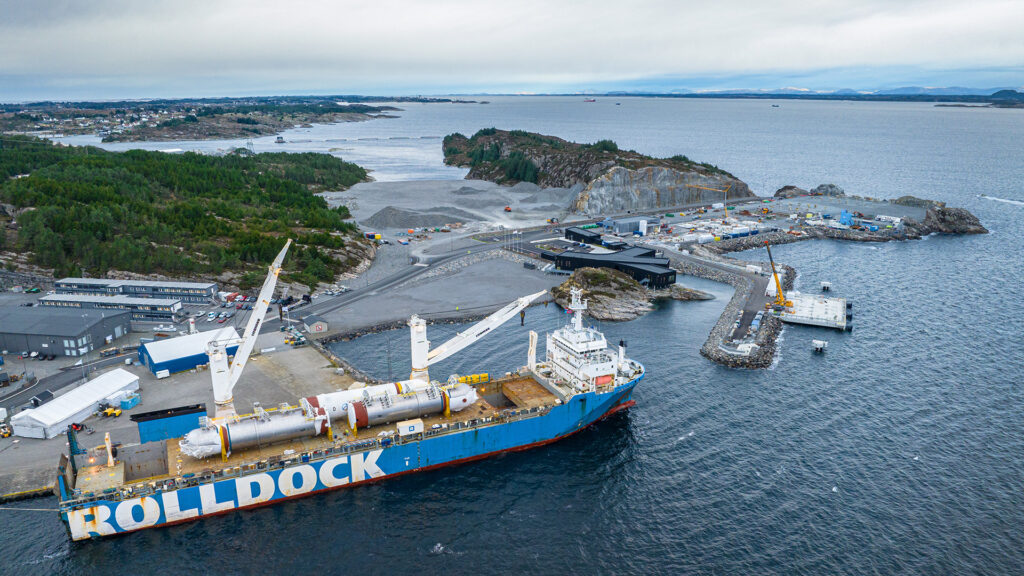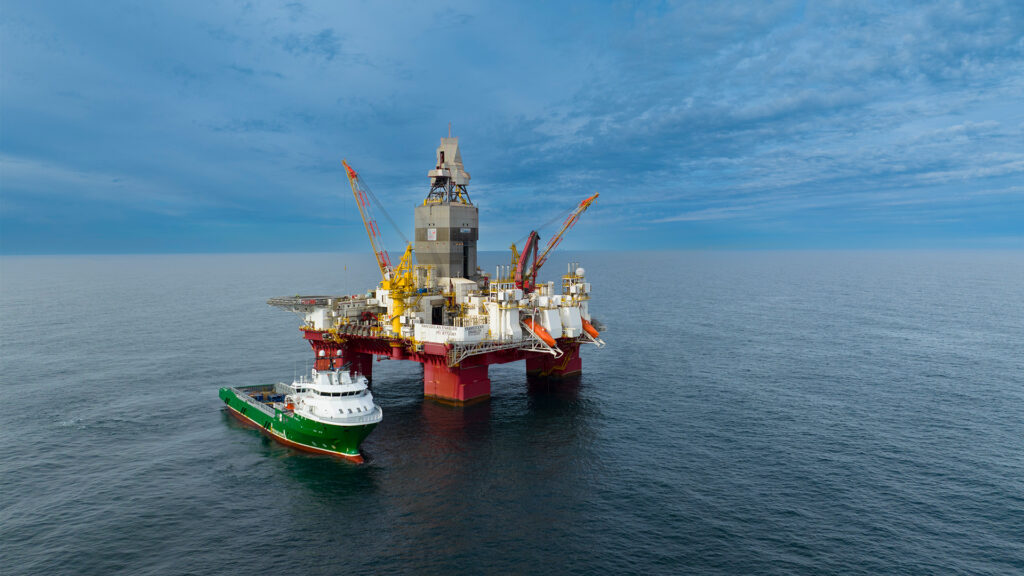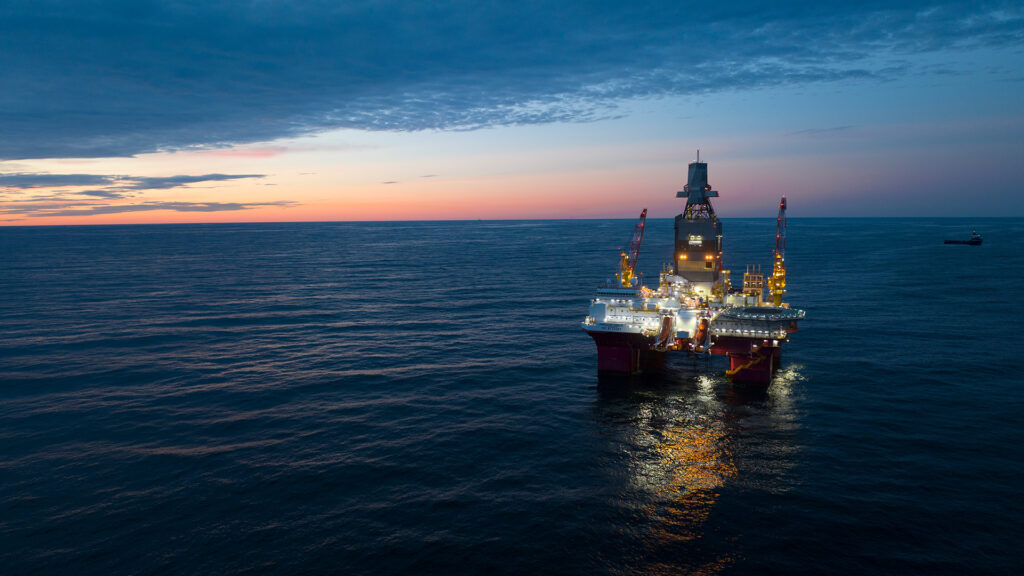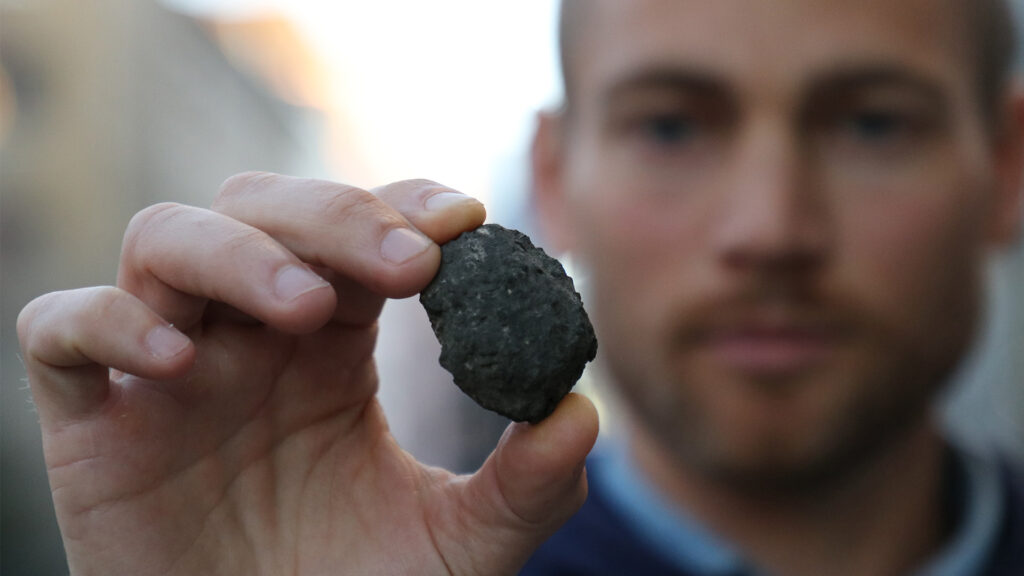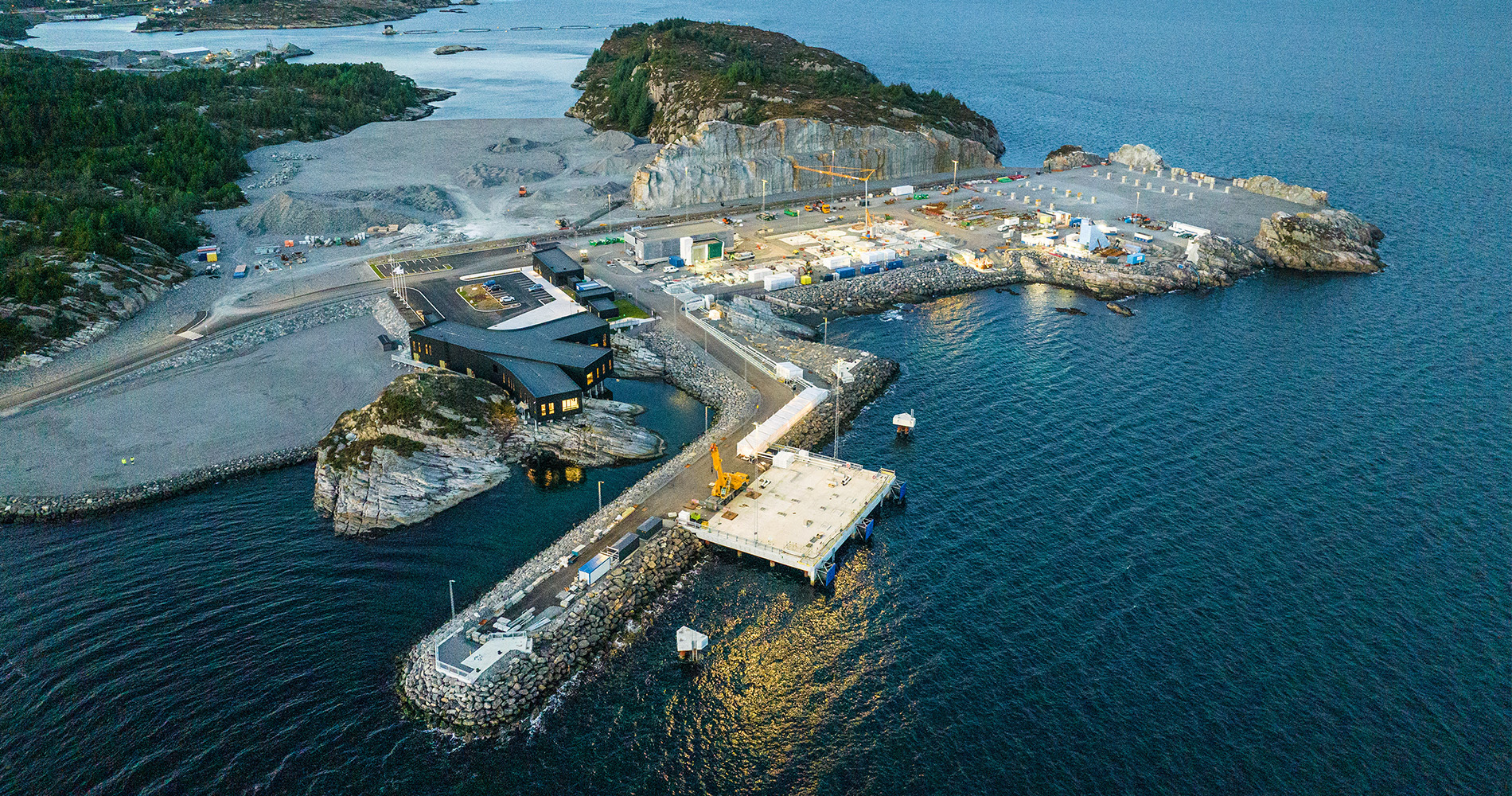
With carbon capture on an industrial scale, Norway plans for a greener future
When he was 15, Eivind Berstad started working as a process technician with his father at the Ineos petrochemical plant near Brevik, a center of heavy industry on the southeastern coast of Norway.
“It was pretty cool to work a night shift and operate machines with 10,000 horsepower – it was dirty and hot and high pressure,” he says. “For me, industry is close to home.”
Now, Berstad works for Bellona, a Norway-based environmental organization. While in the past, environmental groups were often met with skepticism in Brevik, times have changed. Attitudes have softened, and dialogue comes more easily, he says.
“To be taken seriously by the public, or policymakers, or industry, you have to come up with a solution scenario,” he says. “If we’re going to build offshore wind, we need mining for materials. If we’re going to produce cement, then we need carbon capture and storage to reduce emissions.”
Brevik is the site of a pioneering project to capture carbon dioxide emitted by the large Norcem cement factory there. Carbon dioxide, separated from other emissions, will be turned from a gas to a liquid so it can be transported and then stored in reservoirs as far as 2,600 meters beneath the Atlantic Ocean off Norway’s west coast.
The project at Brevik is part of a larger, national effort in Norway to become a major player in carbon capture and storage, or CCS.
For decades the country has developed expertise in the extraction of fossil fuels from offshore wells. Now it’s using that expertise to do the exact opposite: Create the infrastructure to capture carbon dioxide and store it deep under the continental shelf, where some of the fuel that generated those emissions was found in the first place.
A company called Aker Carbon Capture is building the capture plant in Brevik now. When it opens in 2024, it will be the first large-scale carbon capture plant at a cement factory.

Berstad has a master’s degree in industrial chemistry and biotechnology and is an expert on CCS. In his role at Bellona, he has been an advocate of the project and would like to see more like it. He says it has the potential to cut emissions while saving jobs. More importantly, if it proves efficient, it will be a model for similar operations elsewhere.
Norway’s national effort on CCS is called Longship, and it’s a rare example of collaboration on such a grand scale to pursue climate goals. Norwegian government officials, Aker Carbon Capture, three oil-and-gas companies, Norcem and Microsoft are among the disparate players working together to create a system to capture, transport and store carbon dioxide. (Northern Lights, a joint venture of Shell, Equinor and TotalEnergies, will be transporting and storing the carbon dioxide.)
Aker Carbon Capture’s operation at the Norcem plant will be the first of what is hoped to be many participants in that system from Norway and the rest of Europe.
Cement production is among the largest producers of greenhouse gas emissions. By some accounts, it contributes about 8 percent of all the carbon dioxide emitted into the atmosphere – several times more than aviation, for example.
While some environmental groups and experts remain opposed to the idea of carbon capture and storage, there is a growing consensus that it is needed in hard-to-abate industries like cement and steel if the planet is to reach the goal of net zero emissions. The Intergovernmental Panel on Climate Change (IPCC) 2022 report says CCS is an important part of the overall strategy for mitigating climate change.
Like many Norwegians involved in CCS, Hanne Rolén began her career working on the extraction side of the energy industry. She was an engineer who specialized in the technical safety of subsea projects. Now she’s the head of sustainability for Aker Carbon Capture.
“An important task for all of us involved in CCS is to demystify what it’s really about,” she says. “Because it sounds really mystic.”

The way Rolén explains it makes the process easy to understand. Cement production requires a lot of heat to break limestone down into “clinker,” which becomes the basis for cement. The chemical process of converting limestone to clinker produces carbon dioxide emissions as does the fuel burned to achieve it.
Aker Carbon Capture developed a system that captures the emissions coming out of factory’s smokestacks. The system uses an amine-based solvent to separate carbon dioxide from the other elements in the flue gas, Rolén says. The solvent used to separate the carbon dioxide is itself re-separated and used again. The carbon dioxide is then compressed and liquified for transport to the subsea reservoirs where it will be stored.
Using this system, the amount of carbon dioxide emitted from the plant’s smokestacks could be reduced by as much as 95 percent, she says. The design of this capture plant will treat half the flue gas being emitted from the cement factory. About 400,000 tons of carbon dioxide will be captured per year at Brevik then transported to a receiving terminal at Øygarden, on the western coast of Norway by specialized ships that are being constructed now.
The carbon will be pumped into naturally occurring deep-sea reservoirs, which have been extensively screened for suitability. As Rolén says, “storing carbon this way takes advantage of the same characteristics in the underground structures that have been storing oil and gas for millions of years.”
This couldn’t be happening without an enormous investment on the part of the Norwegian government, which is funding as much as 70 percent of the cost of developing the infrastructure to capture, ship and store the carbon dioxide. Longship, the overall program, is expected to cost about 25 billion Norwegian kroner, or about 2.4 billion euros. Northern Lights will handle transport and storage of the liquified carbon dioxide. Northern Lights hopes to eventually manage the storage of a large part of Europe’s captured carbon.
Norway has been storing carbon dioxide in the same type of subsea reservoirs since 1996. But because nothing like this nationwide system for capturing, transporting and storing carbon from many sources has ever been built before, and regulation is in its infancy, every step in its development can be challenging.
Jacob Bang is a principal program manager at Microsoft Cloud for Industry, working within Energy.
“If you think about oil and gas today, you pump it out of the ground, it becomes the product, and someone pays for it,” he says. “This is, in a very simplified way, the exact opposite. You capture something, you put it back into the ground, and someone pays for it.”
Bang is part of the engineering team at Microsoft building an integrated digital platform that will track carbon dioxide from the point of emission to its eventual storage. The system would support each organization’s work at every step of the “value chain” – meaning tracking the physical movement of the carbon dioxide, as well as all the financial and other transactions taking place. Microsoft is working with Northern Lights, Aker Carbon Capture and other partners to create this new “system of systems,” with the hope that it will become an industry standard. The project is closely aligned with Microsoft’s broader sustainability goals.
“Aker Carbon Capture needs to work with the transport facility, it needs to work with the storage facility,” Bang says. “The problem is that all the data is tied to these physical moves of carbon and transactions that need to be shared along the value chain.” He says that data needs to be shared, accessible and verifiable.
Handling carbon dioxide is a complex task; as it moves through the CCS system it takes different forms, requires different kinds of management and must be carefully monitored at every step. Moreover, it moves between different organizations with different requirements.
Thus, Bang says, the data platform Microsoft is building will require different kinds of tools; some that engineers are in the process of developing now to support each company involved in handling the carbon dioxide. The system will include artificial intelligence and other advanced tools. “Data will be the core that makes the industry function,” he says. “Microsoft is investing heavily in building the digital infrastructure to support all parts of the value chain, from gathering data at the capture site to using High Performance Computing analysis of the reservoirs used to store CO2.”
As carbon dioxide moves through the system, temperature, pressure and other variables must be tallied every step of the way. This is critical because as new regulations, taxes and incentives come into effect, companies and government agencies will be keen to have verifiable data to calculate costs and benefits.
In Hanne Rolén’s view, the collaboration with Microsoft has the potential to accelerate the movement toward Europe’s larger climate goals.
“We need to make sure we can bring decarbonizing solutions to the market quicker and cheaper, supported by digital tools that can provide better transparency, traceability and trust to the end product,” she says.

Rolén is proud of her job; she says she feels good when she tells her children what she does. But she also says the work is just beginning. She cites the International Energy Agency’s Net Zero by 2050 report, which says that carbon capture and sequestration will be a necessary part of the actions needed to meet the goal of net zero emissions. The report says many more CCS projects will be needed, and quickly, to reach that goal.
Rolén says that while there is “exponential” growth in interest in CCS, but more projects like the one in Brevik will be needed and built at a faster pace if global warming is to be limited. “We have quite a road ahead of us to capture and store the required volumes,” she says.
Bellona has been advocating the use of CCS to reduce emissions in industries like cement and power since the mid-1990s, says Eivind Berstad, Bellona’s CCS team lead.
The organization has been in dialogue with cement producers for some time, pushing for CCS and asking companies what the biggest obstacles to using it are. It has also lobbied for more government support. “It needs to be understood that CCS is needed to decarbonize some industries,” Berstad says. “It needs to be legal, it needs to be supported in different ways. As long as dumping CO2 in the atmosphere is cheaper than to store it, emissions will continue.”
He says Aker Carbon Capture’s project at Brevik is an important first step.
“In this case it’s only 400,000 tons of CO2 annually, which is very insignificant in the European perspective,” he says. “But to show that it works, that it actually delivers on its promises … this will be the most important part.”
Top image: Northern Lights’ carbon dioxide receiving terminal in Øygarden municipality in Norway. Photo by Northern Lights.


